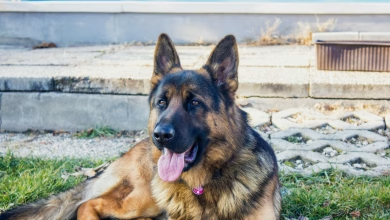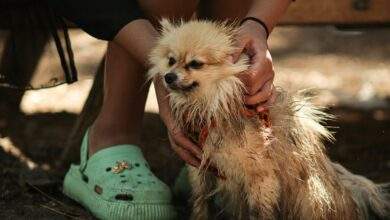
Pet allergies can be a real challenge for owners who adore their furry companions but suffer from itchy eyes and sneezing fits. Fortunately, with the right grooming techniques, you can significantly reduce allergens in your home and enjoy a more comfortable life with your pet. In this comprehensive guide, we’ll explore grooming tips specifically tailored for allergic owners, helping you breathe easier and enjoy a healthier living space.
Table of contents
Grooming Techniques to Reduce Allergens
1. Bathing Your Pet
- Frequency Matters: Regular baths can wash away allergens, so consider bathing your pet once a week or as recommended by your vet. This practice is especially crucial for dogs that spend a lot of time outdoors.
- Hypoallergenic Shampoos: Opt for hypoallergenic pet shampoos to minimize skin irritation and reduce allergen buildup. These shampoos are formulated to be gentle on your pet’s skin while effectively cleansing and deodorizing.
- Proper Technique: Ensure a thorough rinse to remove all shampoo residue, as any left behind can cause skin dryness and itching. Use lukewarm water to avoid shocking your pet with extreme temperatures.
2. Brushing Your Pet
- Daily Brushing: Make brushing your pet’s fur a daily ritual. This not only removes loose hair and dander before they can become airborne allergens but also helps distribute natural oils, keeping the coat healthy and reducing shedding.
- Hypoallergenic Brushes: Invest in grooming brushes designed to trap allergens effectively, reducing their spread in your home. These brushes often have tightly packed bristles or special coatings that prevent allergens from becoming airborne.
- Outdoor Brushing: Whenever possible, brush your pet outdoors to prevent allergens from settling indoors. This can be especially helpful during high-pollen seasons when outdoor allergens might cling to your pet’s fur.
3. Trimming Nails
- Shorter Nails, Fewer Allergens: Keeping your pet’s nails trimmed not only prevents accidental scratches but also minimizes the collection of allergens, dirt, and outdoor contaminants under their nails.
- Regular Maintenance: Create a nail-trimming schedule based on your pet’s needs. Dogs that frequently walk on hard surfaces may naturally wear down their nails, while indoor pets might require more frequent trims. Be cautious not to cut too close to the quick, as this can be painful and cause bleeding.
4. Cleaning Ears
- Clean Ears, Less Itching: Use a vet-recommended ear cleaning solution to remove excess wax and dirt, which can trigger allergies and lead to ear infections.
- Gentle Approach: Be gentle when cleaning your pet’s ears, as they are sensitive. Avoid using cotton swabs or inserting anything deep into the ear canal, as this can cause injury. Instead, soak a cotton ball in the cleaning solution and gently wipe away visible dirt and wax.
Hypoallergenic Grooming Products
5. Shampoos and Conditioners
- Look for the Label: When shopping for grooming products, choose those labeled as hypoallergenic, as they are formulated to be less likely to trigger allergies. These products often contain milder ingredients and fewer artificial fragrances and dyes.
- Consult Your Vet: If you’re unsure about which products are suitable for your pet’s skin type and allergies, consult your vet or a professional groomer. They can recommend specific brands and formulations tailored to your pet’s needs.
6. Grooming Brushes
- Designed for Allergies: Invest in grooming brushes designed to trap and contain allergens, making your daily brushing routine more effective. These brushes are designed with allergen capture in mind and are a valuable addition to your grooming toolkit.
- Ask for Recommendations: Seek recommendations for the right brush for your pet’s coat type and length. Different brushes are better suited for long-haired or short-haired pets, and professionals can provide expert guidance.
Maintaining an Allergy-Free Home
7. Clean Bedding
- Regular Washing: Wash your pet’s bedding frequently using hot water, as this effectively kills dust mites and allergens. Consider using a mild, hypoallergenic detergent to prevent skin irritation.
- Allergy-Proof Covers: Invest in allergy-proof covers for your pet’s bedding to minimize allergen exposure. These covers create an additional barrier that prevents allergens from settling into the bedding material.
8. Cleaning Your Home
- Regular Vacuuming: Use a vacuum cleaner equipped with a HEPA filter to trap allergens effectively. Vacuum carpets, rugs, upholstery, and pet bedding regularly. High-efficiency particulate air (HEPA) filters can capture particles as small as 0.3 microns, ensuring cleaner air.
- Dusting: When dusting surfaces in your home, opt for a damp cloth rather than a dry one. Damp cloths capture allergens instead of stirring them into the air. Pay extra attention to areas where your pet spends most of their time.
- Air Purifiers: Install air purifiers with HEPA filters in rooms where you and your pet spend the most time. These devices continuously filter and reduce airborne allergens, promoting cleaner and fresher air.
9. Creating an Allergy-Free Zone
- Isolated Space: Designate a pet-free zone in your home where allergic reactions are less likely to occur. Ideally, this should be a bedroom where you spend a significant amount of time. Keep this area clean and free of pet hair and dander.
Managing Pet Allergies with Medication
- Consult a Professional: If your allergies are severe, consult an allergist or immunologist who specializes in pet allergies. They can recommend suitable allergy medications, such as antihistamines or corticosteroids, to alleviate your symptoms.
- Allergy Shots: For long-term relief, consider allergen immunotherapy, commonly known as allergy shots. These injections can desensitize your immune system to pet allergens over time, reducing your allergic reactions.
By following these grooming tips and maintaining a clean living environment, you can significantly reduce allergens in your home, making it more comfortable for both you and your beloved pet. Remember to consult your vet or a professional groomer for personalized advice on managing pet allergies effectively. With the right strategies, you can enjoy a sneeze-free life with your furry friend and create a harmonious home where allergies no longer dictate your comfort.








